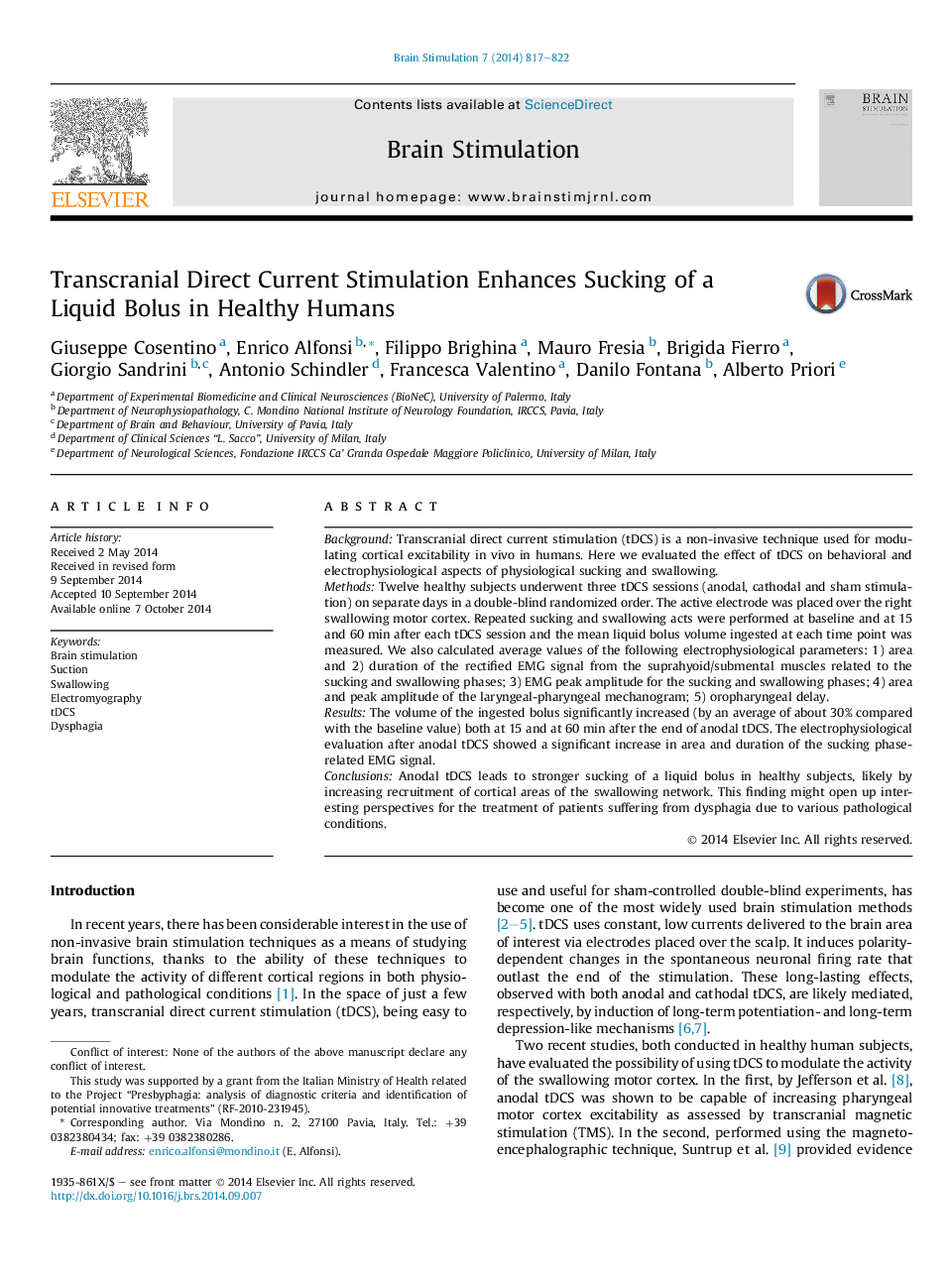| کد مقاله | کد نشریه | سال انتشار | مقاله انگلیسی | نسخه تمام متن |
|---|---|---|---|---|
| 6005388 | 1184663 | 2014 | 6 صفحه PDF | دانلود رایگان |
- There exists electrophysiological and neuroradiological evidence that transcranial direct current stimulation (tDCS) modulates excitability of the swallowing-related cortical network. However, until now no studies have been performed evaluating the impact of non-invasive brain stimulation techniques on normal sucking and swallowing behavior.
- Here, we provide initial evidence that tDCS may non-invasively modulate sucking behavior in healthy humans. tDCS, applied to the right swallowing motor cortex, significantly enhances sucking of a liquid bolus in normal subjects. tDCS acts mainly by prolonging the contraction time of the suprahyoid/submental muscles during suction.
- Oropharyngeal dysphagia is a high-prevalence condition with enormous personal, social, and economic costs. The available treatment options are very limited. On the basis of our results in healthy subjects, we think that tDCS could become a very useful therapeutic tool for improving dysphagia in different pathological conditions, not least because it is easy to use, cost-effective, and offers the possibility of home treatment.
BackgroundTranscranial direct current stimulation (tDCS) is a non-invasive technique used for modulating cortical excitability in vivo in humans. Here we evaluated the effect of tDCS on behavioral and electrophysiological aspects of physiological sucking and swallowing.MethodsTwelve healthy subjects underwent three tDCS sessions (anodal, cathodal and sham stimulation) on separate days in a double-blind randomized order. The active electrode was placed over the right swallowing motor cortex. Repeated sucking and swallowing acts were performed at baseline and at 15 and 60 min after each tDCS session and the mean liquid bolus volume ingested at each time point was measured. We also calculated average values of the following electrophysiological parameters: 1) area and 2) duration of the rectified EMG signal from the suprahyoid/submental muscles related to the sucking and swallowing phases; 3) EMG peak amplitude for the sucking and swallowing phases; 4) area and peak amplitude of the laryngeal-pharyngeal mechanogram; 5) oropharyngeal delay.ResultsThe volume of the ingested bolus significantly increased (by an average of about 30% compared with the baseline value) both at 15 and at 60 min after the end of anodal tDCS. The electrophysiological evaluation after anodal tDCS showed a significant increase in area and duration of the sucking phase-related EMG signal.ConclusionsAnodal tDCS leads to stronger sucking of a liquid bolus in healthy subjects, likely by increasing recruitment of cortical areas of the swallowing network. This finding might open up interesting perspectives for the treatment of patients suffering from dysphagia due to various pathological conditions.
Journal: Brain Stimulation - Volume 7, Issue 6, NovemberâDecember 2014, Pages 817-822
